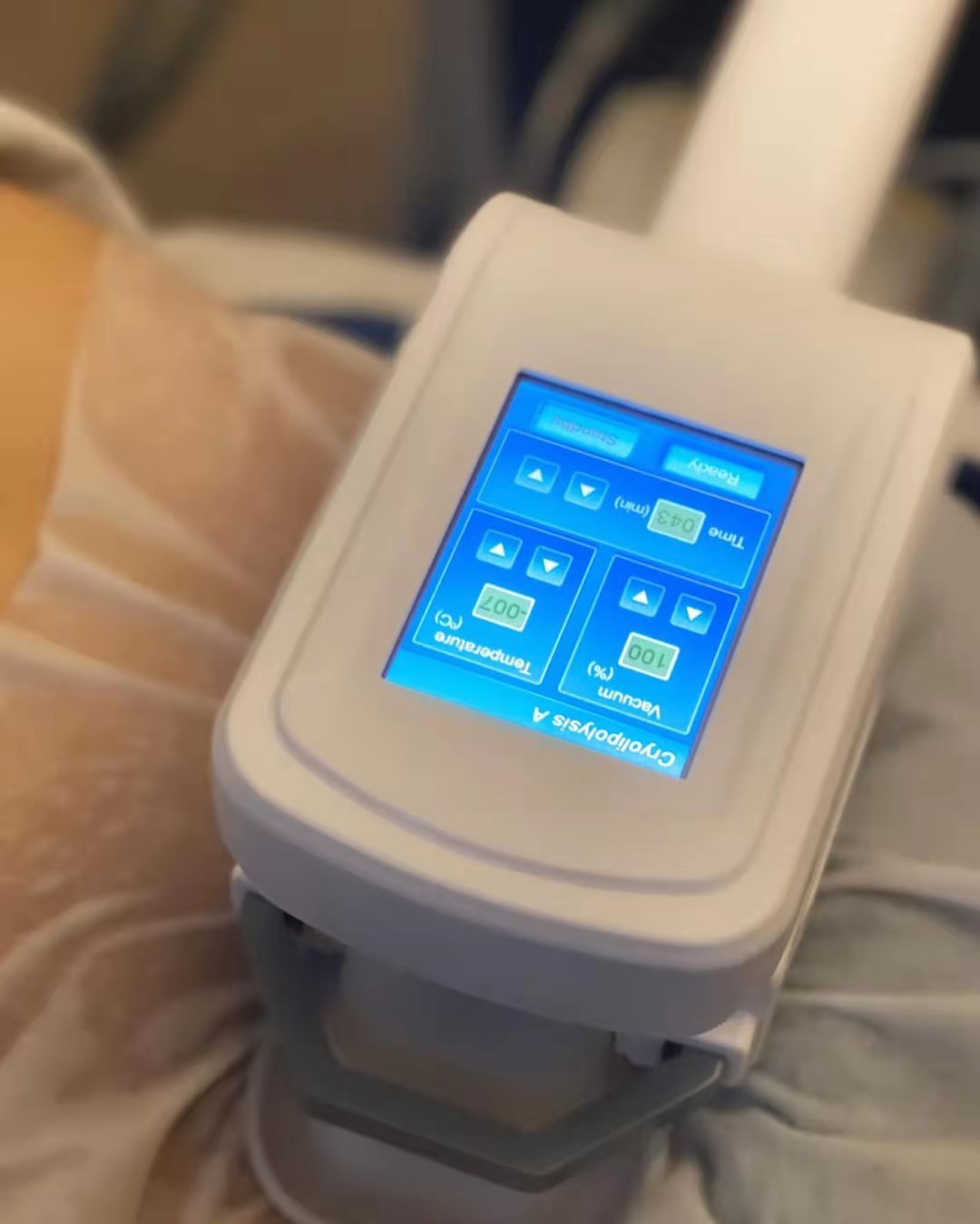What is Cryolipolysis?
Cryolipolysis is a fat-freezing method that aims to get rid of stubborn aft in certain parts of your body. Scientist came up with the idea for cryolipolysis by studying what happens to fat during frostbite. Fat freezes at a higher temperature than skin. The cryolipolysis device cools your fat to a temperature that destroys it while leaving your skin and other tissures unharmed.

Cryolipolysis Procedure
Cryolipolysis isn’t surgery and doesn’t use needles. The device holds the part of your body your doctor wants to target bettween two paddles. The paddles cool quickly and your doctor leaves them in place for about 35 minutes to 1 hour and 15 minutes. During that time, the process destroy about 20%-25% of the fat cells in the area that’s targeted.
The final results may not show up for a few months, but you amy start to see some changes within a few weeks. Your immune system clears out the dead fat cells slowly over this time.
Who Is It For?
Cryolipolysis isn’t a way to lose weight. Your doctor might suggest it if you’ve tried diet and exercise and haven’t ben able to get rid of cerrtin fat bulges.
You should avoid cryolipolysis if you have:
- Loose skin
- Poor skin tone
- Cryoglobulinemia (a condition where abnormal proteins in your blood thicken in coil temperature)
- Cold urticaria (a skin condition taht causes hives on your skin when it gets cold)
- Paroxysmal cold hemoglobinuria (a type of anemia that destroys your red blood cells when you’re in cold temperatures)
A doctor can use cryolipolysis to help you kill fat cells in ares of your body such as:
- Under the chin and jawline
- Thighs
- Belly
- Back and sides
- Under the butt
- along thebra line
- Upper arm
Cryolipolysis Risks
You can get cryolipolysis done at your doctor’s office, and you don’t need to schedule recovery time afterward. It’s OK to drrive yourself home from the appointment.
There are a few side effects. During the process, you may feel a pulling or tugging on your skin and an intense cold. Afterward, you may feel sore, like you’ve been exercising. You may also swell a little.
Rarely, cryolipolysis can cause mild or moderate pain afterward. You’re also at a slight nerve pain.
Sometimes your skin can look less smooth afterward. Less than 1% of people who get it done have a complication called paradoxical fat hyperplasia. When this happens, the number of fat cells in the area of treatment increase instead of decrease. You’re three times more likely to have this happen if you’re a man. People of hispanic descent are also more likely to have this side effect.
Cryolipolysis Effectiveness
Studies ahow that cryolipolysis is safe and effective. The risks are few and rare. There’s no damage to your liver. Side effects are mild, too, and go away after a short time. On average, it lessens the amount of fat on targeted areas by 10%-25%.
Cryolipolysis Cost
Cryolipolysis is considered a cosmetic treatment. That means insurance won’t cover it.
How much you’ll pay for cryolipolysis depends on several things:
- The body part you want to treat (smaller areas cost less)
- How many sessions you have
- Who does your procedure, and your location
Cryolipolysis for the arms, for example, may take only one session per arm and would cost less per session than larger areas, such as the stomach or love handles.


Cryolipolysis Alternatives
Other procedures to remove, shrink, or break down fat include:
- Liposuction, a type of plastic surgery that removes fat deposits
- Heat treatments that use lasers to remove fat
- Deoxycholic acid injection, which breaks down fat cells (used only for the chin area)
- A radiofrequency procedure that kills fat cells with heat
- A cold laser treatment that shrinks fat cells
- Electromagnetic treatment, a procedure to break down fat cells and tighten muscles
Talk to your doctor before having any cosmetic procedure.
 EN
EN FR
FR
